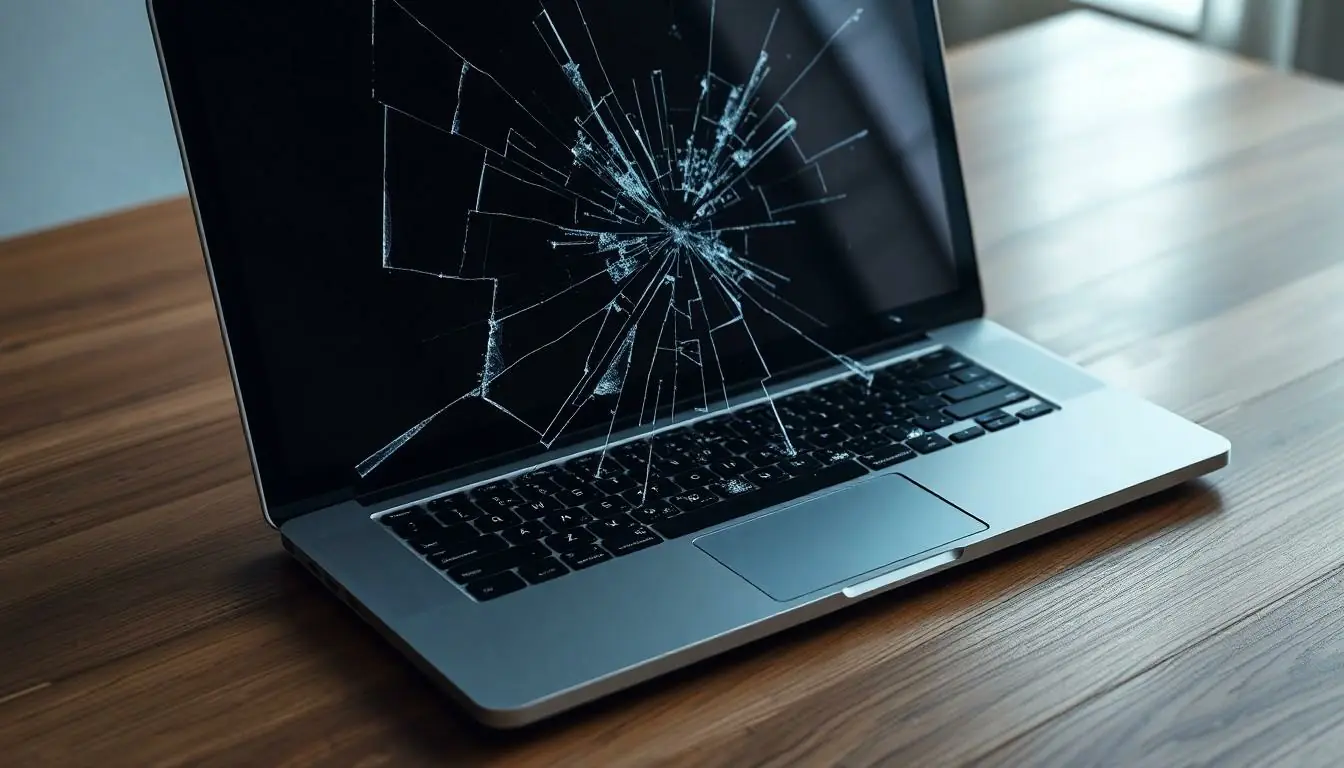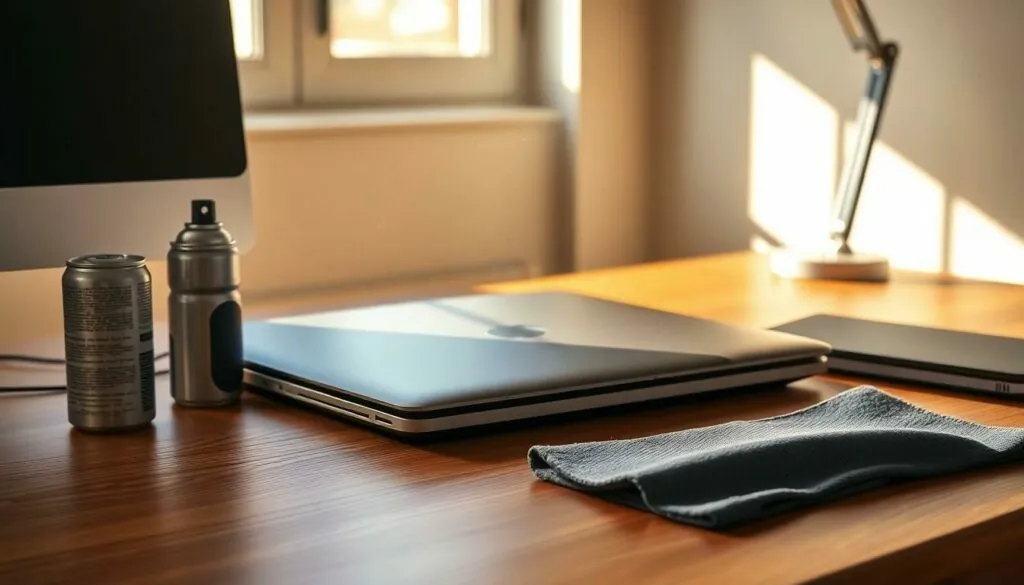Table of Contents
ToggleWhen it comes to computer hardware, it’s not just about speed and style; it’s about survival. Many unsuspecting users unknowingly invite disaster into their tech lives. From the infamous coffee spill to the lurking dust bunnies under the desk, countless factors can wreak havoc on that precious machine.
Environmental Factors
Environmental factors significantly impact the longevity and functionality of computer hardware. Understanding these influences helps in safeguarding devices from potential issues.
Temperature Extremes
Excessive heat can lead to hardware failure. Components such as CPUs and GPUs thrive at optimal temperatures. While operating within 70 to 85°F (21 to 29°C) is ideal, prolonged exposure to temperatures above 95°F (35°C) risks thermal damage and shortened lifespan. Conversely, cold environments below 32°F (0°C) can cause condensation, resulting in circuit shorting. Maintaining a stable temperature range enhances reliability and performance.
Humidity Levels
High humidity levels create a conducive environment for rust and corrosion. When humidity exceeds 60%, moisture can settle on hardware components. This moisture accumulation risks electrical short circuits and can lead to permanent damage. Maintaining humidity levels between 30% and 50% ensures hardware integrity and optimal performance. Low humidity levels, on the other hand, increase static electricity risk, which can disrupt sensitive electronic components. Monitoring humidity helps prevent these damaging effects.
Physical Damage

Physical damage poses a severe threat to computer hardware. Two common issues, drops and impacts, as well as scratches and cracks, can significantly impair functionality.
Drops and Impacts
Drops and impacts frequently result in severe damage to computer components. When a device falls, internal parts can shift or break. Motherboards and hard drives are particularly vulnerable, experiencing short circuits or mechanical failures. Users often overlook the serious consequences of dropping a laptop or desktop. Even a slight impact may misalign connections or cause irreversible damage. Maintaining secure placement and using protective cases can mitigate these risks.
Scratches and Cracks
Scratches and cracks on hardware surfaces can compromise aesthetics and functionality. Display screens are especially prone to these issues, affecting visibility and usability. Accidental contact with sharp objects often leads to superficial damage that worsens over time. Heavier impacts can shatter screens or create cracks, leading to exposure of internal components. Protecting devices with screen protectors or carrying bags helps prevent such issues from arising. Regular inspection of hardware can also allow early detection of potential damage.
Electrical Issues
Electrical issues can significantly damage computer hardware. Two primary concerns include power surges and static electricity.
Power Surges
Power surges occur when there is a sudden increase in voltage, causing excessive current flow through electronic devices. Equipment exposed to these surges may experience immediate failure or long-term damage. Devices plugged into the same outlet can amplify risks, making it essential to use surge protectors. These devices absorb excess voltage and help prevent permanent damages to computers and peripherals. Regularly replacing surge protectors is also a wise practice, as their effectiveness decreases over time. In areas prone to electrical storms, additional precautions like unplugging equipment during storms can further safeguard hardware.
Static Electricity
Static electricity poses a hidden risk to computer components. It results from friction between materials and can discharge suddenly, damaging sensitive electronics. Electronic devices can suffer serious malfunctions or failures if exposed to static discharges. Working on computers should occur in static-free environments to avoid these risks. Grounding oneself by using an anti-static wrist strap provides an effective precaution during repairs. Additionally, maintaining a humidity level of 30 to 50 percent reduces static build-up, creating a safer workspace for computer hardware. Keeping workspaces clean and clutter-free also helps minimize static electricity hazards.
Maintenance Neglect
Neglecting maintenance can lead to significant damage to computer hardware. Users often overlook factors like dust build-up and inadequate cleaning, both of which can severely affect performance.
Dust Accumulation
Dust accumulation poses a serious threat to computer components. It clogs cooling fans and obstructs airflow, leading to overheating. Just a thin layer of dust can inhibit heat dissipation, causing temperatures to rise beyond safe limits. Motherboards and graphics cards suffer the most, as excess heat compromises their functionality. Regular dusting can prevent these issues. Using compressed air helps dislodge dust without causing damage. Establishing a cleaning routine every few months ensures that dust doesn’t become a persistent problem.
Lack of Cleaning
Lack of cleaning routinely aggravates the risks tied to hardware damage. Dirt and debris can settle in critical areas, including keyboards, ports, and vents. Accumulated grime can hinder connections, resulting in intermittent failures or slow performance. Regularly wiping surfaces and using appropriate cleaning tools extends the lifespan of hardware. A microfiber cloth works well for screens, while cleaning solutions can assist with keyboards. Establishing a habit of cleaning every few weeks promotes optimal performance and protects against potential hazards.
Protecting computer hardware is essential for maintaining its longevity and performance. By being aware of the various factors that can cause damage, users can take proactive measures to safeguard their devices. Addressing environmental conditions like temperature and humidity is crucial in preventing hardware failure.
Moreover, minimizing risks from physical impacts and electrical issues can significantly enhance the device’s durability. Regular maintenance and cleaning routines play a vital role in keeping computers in optimal condition. By implementing these practices, users can ensure their hardware remains functional and efficient for years to come.




